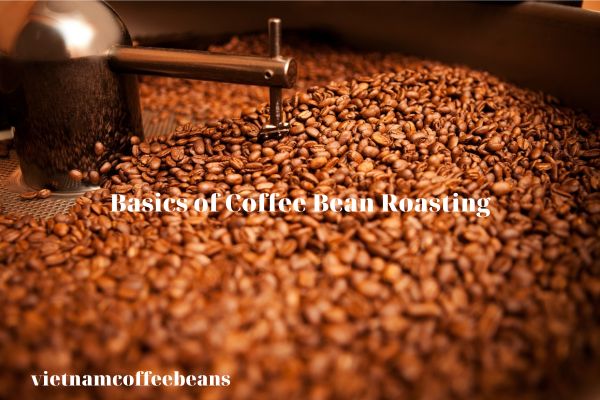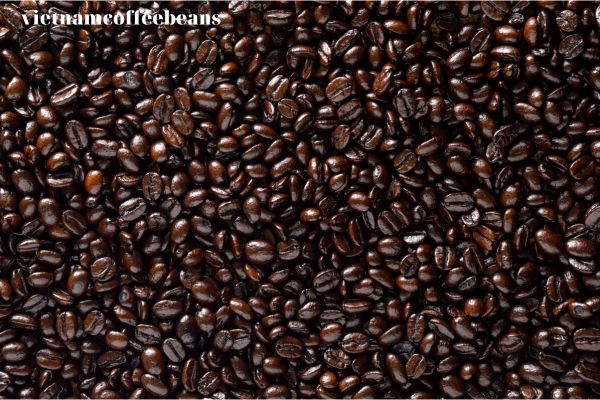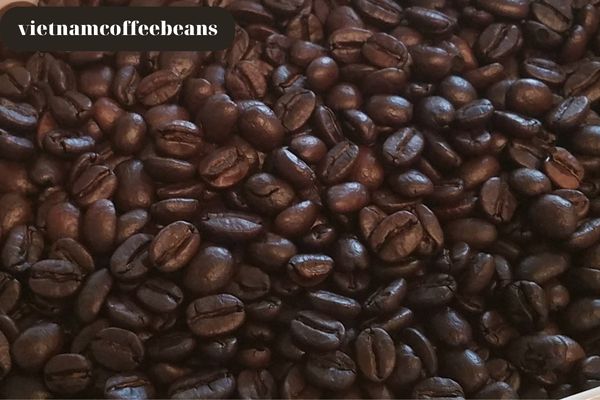Ah, the perfect cup of coffee. It’s a delicate balance of aroma, flavor, and temperature. And speaking of temperature, did you know that the roasting process plays a crucial role in determining the taste and quality of your brew? That’s right – finding the ideal coffee roasting temperature is an art form in itself.
In my quest for the ultimate coffee experience, I’ve discovered that roasting heat is not something to be taken lightly. It can make or break the flavors that dance on your palate with each sip. When it comes to roasting coffee beans, precision is key.
But how exactly does temperature affect the final outcome? Well, buckle up because we’re about to dive into the fascinating world of coffee roasting heat. We’ll explore how different temperatures impact flavor profiles, uncover the secrets to finding that sweet spot, and even discuss how brewing methods come into play.
Different methods of roasting coffee beans require different temperatures, depending on the desired roast level.
So grab your favorite mug and join me on this journey as we unlock the mysteries behind achieving that perfect roast at just the right temperature. Get ready for a caffeinated adventure like no other!
Key Takeaways
- Roasting heat is crucial for determining the taste and quality of coffee.
- Different temperatures impact the flavor profiles of coffee.
- Temperature control determines the depth and complexity of coffee’s taste profile.
- Matching roast profiles to brewing techniques is crucial for optimal flavor extraction.
The Basics of Coffee Bean Roasting

Now, let’s dive into the basics types of roasting and discover how you can create a rich and aromatic cup of joe by carefully controlling the roasting heat. Coffee bean selection is crucial in achieving the desired flavor profile.
Coffee roasting temperature is one of the factors that affects the flavor, aroma, and caffeine content of different coffee roasts.
Different regions produce beans with distinct characteristics, such as acidity, body, and aroma. It is essential to choose beans that align with your taste preferences. Once you have selected the perfect beans, it’s time to consider the roasting time.
The temperature at which coffee beans are roasted plays a crucial role in determining the flavor, aroma, and body of the finished product. Traditional coffee roasting methods involve heating the beans to a specific temperature range, depending on the desired roast level.
This factor plays a significant role in determining the coffee’s flavor intensity. Longer roast times result in a darker color and more developed flavors, while shorter roast times preserve more of the bean’s natural attributes.
By understanding these fundamental aspects of bean roasting, you can unlock endless possibilities for crafting an exceptional cup of coffee.
The Impact of Roasting heat on Flavor
When it comes to bean roasting heat, there is a significant impact on the flavor profile of the final product. One key aspect to consider is the difference between light and dark roast. Light roasts tend to preserve more of the acidity and brightness of the coffee beans, while dark roasts (what you need to know about dark roast coffee) develop deeper flavors with less acidity.
Roasting temperature is not the only factor that affects roasted coffee quality. Other factors include bean density, bean age, bean processing, roasting time, and airflow.
Another important consideration is how different roasting heat can balance acidity, body, and aroma in a cup of coffee. Finding the right balance is crucial in creating a well-rounded and enjoyable coffee experience.
Light Roast vs. Dark Roast

Contrary to popular belief, opting for a dark roast coffee is like choosing charred bitterness over the delicate nuances of a light roast coffee. When it comes to bean roasting, temperature control plays a crucial role in flavor development.
A light roast is typically achieved by roasting the beans at lower temperatures, around 350°F (175°C), allowing the flavors to develop gradually and preserving their natural acidity and fruity notes. On the other hand, a dark roast requires high temperatures, usually around 450°F (232°C), which results in a longer roasting time and the emergence of bold flavors with smoky undertones.
However, this also leads to the loss of some inherent characteristics of the coffee beans. In summary:
- Light Roast: Gentle heat preserves acidity and fruity flavors.
- Dark Roast: Intense heat creates bold flavors with smoky undertones.
- Flavor Development: Temperature control determines the depth and complexity of coffee’s taste profile.
By understanding these differences, coffee enthusiasts can make an informed choice based on their preference for either delicate subtleties or robust richness in their cup of joe.
Balancing Acidity, Body, and Aroma
Finding the perfect balance between acidity, body, and aroma is key to creating a truly satisfying cup of joe. Acidity management plays a crucial role in determining the overall flavor profile of coffee. It can range from bright and tangy to mellow and smooth.
By carefully controlling the roasting heat, acidity levels can be adjusted to achieve the desired taste. Aroma development is another important aspect that contributes to the overall sensory experience of coffee.
As coffee beans are roasted, they undergo chemical reactions that release aromatic compounds. These compounds give coffee its distinct smell and play a significant role in enhancing its flavor. Roasting at different temperatures allows for varying degrees of aroma development, resulting in unique fragrances that complement the final brew.
Balancing acidity, body, and aroma creates a harmonious blend that satisfies both our taste buds and olfactory senses.
| Acidity Management | Body Enhancement | Aroma Development |
|---|---|---|
| Controlling roasting heat | Selecting high-quality beans | Chemical reactions during roasting |
| Adjusting acidity levels for desired taste | Proper grinding techniques | Release of aromatic compounds |
| Achieving a balanced flavor profile | Brew method optimization | Unique fragrances in final brew |
| Enhancing overall sensory experience | Using appropriate water-to-coffee ratio | Complementing flavors |
| Creating a satisfying cup of joe | Perfecting extraction time | Pleasing olfactory senses |
Finding the Perfect Coffee Roasting Temperature

To achieve the perfect roast, you must identify the ideal temperature for coffee beans. The roasting time and flavor development heavily depend on finding the right balance.
Here are three key factors to consider:
- Temperature precision: Achieving consistent results requires precise control over the roasting heat. Small variations can greatly affect the final flavor profile of the coffee.
- Flavor transformation: As the beans reach higher temperatures, chemical reactions occur that transform their flavors. Finding the sweet spot allows for a delicate balance between acidity, body, and aroma.
- Development stage: Different stages of roasting provide distinct flavor profiles. Determining the optimal temperature at each stage is crucial for achieving desired taste characteristics.
By carefully monitoring and adjusting temperatures throughout the roasting process, coffee professionals can bring out unique flavors and create an exceptional cup of coffee with balanced acidity, rich body, and captivating aroma.
Factors Affecting Roasting heat
When it comes to determining the perfect roasting heat for coffee, there are several factors that come into play. Two key points to consider are the bean origin and variety, as well as the moisture content and density of the beans.
The origin and variety of the beans can greatly influence their flavor profile and therefore impact the roasting heat needed to bring out their best qualities. Additionally, the moisture content and density of the beans can affect how evenly they roast, requiring adjustments in temperature to achieve an optimal result.
Bean Origin and Variety
Explore the rich flavors and unique profiles of coffee beans from different origins and varieties, allowing yourself to be transported on a sensory journey like no other. The origin and variety of coffee beans play a crucial role in determining the optimal roasting heat.
Here are three key factors to consider when it comes to bean selection and roasting time:
- Terroir: Just like wine, coffee beans exhibit distinctive characteristics based on where they are grown. Factors such as altitude, soil composition, and climate influence the flavor profile of the beans. For example, Ethiopian Yirgacheffe beans offer delicate floral notes with hints of citrus, while Brazilian Santos beans provide a smooth chocolatey taste.
- Varietal: Different coffee varietals possess their own inherent qualities that impact the final cup of joe. From Bourbon’s fruity sweetness to Typica’s balanced acidity, each varietal brings its unique flavor to the table.
- Processing method: The way coffee cherries are processed after harvest affects their flavor profile as well. Whether it’s natural (dry) processing that results in fruitier flavors or washed (wet) processing that produces cleaner tastes, this step adds another layer of complexity to consider during roasting.
Air roasted coffee is a method of roasting coffee beans that involves using hot air to heat the beans, rather than a direct heat source.
By understanding these aspects of bean origin and variety, you can fine-tune your roasting heat to bring out the best flavors in every cup.
Moisture Content and Density
Immerse yourself in the world of bean roasting and uncover the hidden secrets of moisture content and density, allowing your taste buds to embark on a flavorful journey like never before. When it comes to achieving the perfect roast, understanding the moisture content of coffee beans is crucial.
Moisture content measurement plays a significant role in determining not only the flavor profile but also the roasting time estimation.
Coffee beans with high moisture content require longer roasting times to reach their desired level of doneness. On the other hand, low moisture content can lead to a quicker roast but may result in a loss of flavor complexity. Therefore, accurately measuring and adjusting moisture levels is vital for achieving consistent results.
Density is another factor that affects coffee roasting. Denser beans tend to retain heat better during the roasting process, resulting in more even and controlled development. This allows for optimal extraction of flavors while minimizing any undesirable characteristics.
By paying attention to both moisture content and density, coffee roasters can ensure that each batch of beans receives an ideal roast, resulting in a cup of coffee that is rich, balanced, and full of delightful nuances.
Roasting heat and Brewing Methods
When green coffee beans comes to roasting heat and brewing methods, there are two key points to consider. The first is matching roast progression to specific brewing techniques in order to achieve optimal flavor extraction. This involves understanding the characteristics of different brewing methods and how they interact with the flavors developed during the roasting process.
The second point is enhancing flavor notes through temperature adjustments during brewing. By experimenting with variations in water temperature, one can bring out specific flavor nuances and create a more balanced and enjoyable cup of coffee.
Matching Roast Profiles to Brewing Techniques
Discover how to perfectly match roast profiles with your favorite brewing techniques and elevate your coffee experience to new heights. When it comes to optimizing extraction methods, understanding the characteristics of dissimilar roast profiles is crucial. Here are five key points to consider:
- Lighter roasts: These are ideal for brewing methods that require shorter contact time, such as pour-over or Aeropress. They highlight the coffee’s delicate flavors and bright acidity.
- Medium roasts: These versatile roasts work well with most brewing techniques, including drip brewing and French press. They offer a balanced flavor profile, with a combination of sweetness and acidity.
- Dark roasts: With their bold flavor and lower acidity, dark roasts are perfect for espresso-based drinks like lattes and cappuccinos. The longer roasting time brings out rich caramelized notes.
- Single-origin beans: Roasting single-origin beans allows you to showcase their unique characteristics in specific brewing methods. Experimenting with dissimilar roast levels can unlock hidden flavors.
- Blends: For those who prefer a well-rounded cup of coffee, blends offer complexity and balance. They can be roasted to suit various brewing techniques, depending on personal preference.
By matching the right roast profile with your preferred brewing technique, you can enhance the flavors and aromas of your coffee while enjoying a customized coffee experience.
Enhancing Flavor Notes with Temperature Adjustments
To truly unlock the full potential of your brew, you’ll be amazed at how a simple adjustment in temperature can enhance and bring out those hidden flavor notes. Temperature control during the coffee roasting process is crucial for achieving desired flavors.
By experimenting with different temperatures, you can highlight specific characteristics of the beans and create unique taste profiles. Lower temperatures tend to produce lighter roasts with delicate and floral notes, while higher temperatures result in darker roasts with bolder flavors like chocolate and caramel.
It’s important to note that each coffee variety has its own optimal temperature range for showcasing its best flavors. Through careful monitoring and adjustment of temperature, you can fine-tune your roast profile to achieve a cup of coffee that delights your taste buds with intricate nuances and rich complexity.
Frequently Asked Questions
Conclusion
In conclusion, finding the perfect roasting heat is like unlocking the hidden flavors within coffee beans. Just as a master key opens doors effortlessly, the right temperature unlocks a world of delightful aromas and tastes.
By understanding the impact of roasting heat on flavor and considering factors such as bean origin and desired brewing method, one can achieve that perfect cup of coffee. So go ahead, experiment with temperatures and embark on a flavorful journey to awaken your senses!
Hope you get useful information from the article, If you want to learn or want to read more articles about coffeebeans, please visit the website: vietnamcoffeebeans.com
Thank you!





